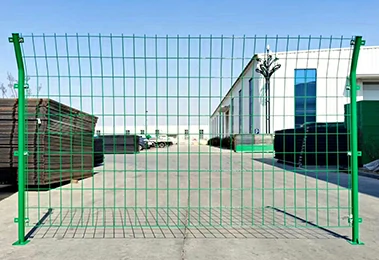 TEL:
+86-13102802206
TEL:
+86-13102802206
 Email:
fencenetting@china.com
Email:
fencenetting@china.com
 Language
Language
 TEL:
+86-13102802206
TEL:
+86-13102802206
 Email:
fencenetting@china.com
Email:
fencenetting@china.com
 Language
Language


The Intersection of Cloth and Fencing An Unconventional Collaboration
In the fascinating world of sport, few activities encapsulate discipline, strategy, and skill as much as fencing. With its rich history dating back centuries, fencing has evolved to not only highlight human agility but also the intricate details of its attire. At the heart of this evolution is the role of cloth, which plays a vital part in not only the fencer’s performance but also in the aesthetics and cultural significance of the sport.
Fencing attire is not simply a uniform; it embodies the spirit of the sport. Traditionally, fencers wear a jacket, trousers, and a mask, crafted from specialized materials designed to withstand the rigors of competition. The primary fabric used in fencing attire is a blend of cotton, polyester, and Kevlar, ensuring that it is both flexible and protective. The jacket is designed to offer maximum mobility, allowing fencers to make quick, fluid movements while remaining adequately protected from the strikes of their opponents.
The Intersection of Cloth and Fencing An Unconventional Collaboration
While the practical aspects of cloth in fencing are undeniable, we cannot overlook the decorative side of this athletic apparel. A fencer’s uniform can be a reflection of their personality and national pride. Many elements of cloth design celebrate a country’s culture, with colors and symbols often incorporated into the attire. For example, national emblems or flags can adorn the jackets, creating a sense of unity and identity amongst competitors. At major tournaments, these colors come to life, painting a vivid picture of international camaraderie and competition.

In recent years, innovations in fabric technology have led to significant advancements in fencing gear. Manufacturers are exploring lighter, more breathable materials, allowing fencers to maintain agility during long bouts. The introduction of moisture-wicking fabrics is also a game changer, helping athletes stay dry and comfortable under pressure. These technological advancements are crucial, as they directly impact a fencer’s performance, aiding them in achieving their best on the strip.
The collaboration of cloth and fencing extends beyond the practical and aesthetic; it also encompasses sustainability. As awareness of environmental issues grows, the sports industry is taking steps to adopt sustainable practices. Many manufacturers are beginning to incorporate recycled materials into their fencing gear, aiming to reduce waste and carbon footprints. This shift is not only beneficial for the environment; it also resonates with athletes who are increasingly looking for ways to align their values with their sport. Sustainable cloth choices are emblematic of a broader cultural movement within sports, focusing on responsibility and stewardship.
Another intriguing aspect of cloth in fencing is the rise of fashion influences intertwined with sportswear. Designers are increasingly being drawn to the unique aesthetics of fencing attire, leading to collaborations that marry functionality with high fashion. These creations often grace runways and editorial spreads, showcasing fencing as more than just a sport but as a cultural phenomenon. This intersection encourages younger generations to appreciate and engage with fencing, combining traditional elements with modern flair.
In conclusion, the role of cloth in fencing is multi-faceted, embodying practicality, safety, culture, and fashion. From its historical roots to modern innovations, the fabric used in fencing attire illustrates the sport’s evolution and its deep connection to both tradition and contemporary trends. As fencing continues to grow in popularity, the intertwining of cloth and sport will undoubtedly lead to more exciting developments, inspiring both athletes and enthusiasts alike. The story of fencing is, in many ways, a story of its cloth—a narrative woven through time.